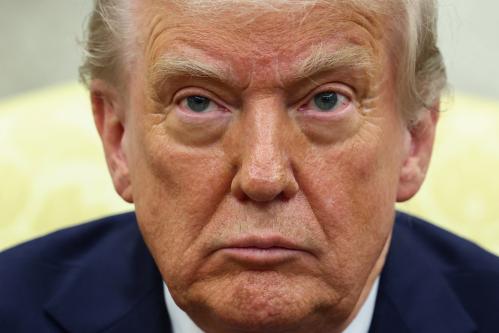Abstract
Despite substantial attention given to fiscal policy concerns in recent years, the federal government’s fiscal status has continued to deteriorate, with the enactment of tax cuts, a massive new Medicare entitlement, increased spending on defense and homeland security, and related economic developments. This paper provides new estimates of the nation’s fiscal status over both the 10-year and long-term horizon, based on the most recent (January 2006) Congressional Budget Office official budget figures (CBO 2006). Under plausible assumptions regarding extension of the expiring tax provisions, coverage of the Alternative Minimum Tax, and real discretionary spending growth, we calculate that the 10-year unified budget deficit for 2007–2016 will be $4.8 trillion. Excluding the cash-flow surpluses in the retirement trust funds raises the projected shortfall to $7.8 trillion. Reduced revenue is the most important factor driving the deficits during this period. Over a permanent horizon, the federal government faces a long-term fiscal gap of 10.8 percent of GDP under our assumptions. Increased spending due to demographics explains most of the long-term imbalance. Thus, a simple way to summarize the fiscal status of the government is to note that the retirement trust funds face substantial long-term deficits, and the rest of the government faces deficits in excess of 4 percent of GDP over the next decade. Dealing with these imbalances will require spending cuts or tax increases that are far beyond the scale of anything currently considered politically palatable.
I. Introduction
Despite substantial attention given to fiscal policy concerns in recent years, the federal government’s fiscal status has continued to deteriorate, with the enactment of tax cuts, a massive new Medicare entitlement, increased spending on defense and homeland security, and related economic developments. This paper provides new estimates of the nation’s fiscal status over both the 10-year and long-term horizon, based on the most recent ( January 2006) Congressional Budget Office official budget figures (CBO 2006). Our general conclusions are not surprising: under plausible assumptions, the nation faces significant short- and medium-term deficits and massive long-term shortfalls. Dealing with these problems will require spending cuts or tax increases that are far beyond the scale of anything currently considered politically palatable. Our specific conclusions include the following:
- CBO now projects a 10-year baseline deficit of $831 billion in the unified budget for fiscal years 2007 to 2016. The budget outside of Social Security faces a baseline deficit of $3.4 trillion.
- Over the first five years of the Bush Administration, the 10-year fiscal outlook deteriorated by $8.3 trillion. In January 2001, the unified baseline for 2002 to 2011 projected a surplus of $5.6 trillion. The baseline for the same period now projects a deficit of $2.7 trillion.
- The budget projections have deteriorated since the beginning of 2005. On a comparable basis, the baseline 10-year unified deficit for 2006 to 2015 has risen by almost $400 billion since January 2005.
The Brookings Institution is committed to quality, independence, and impact.
We are supported by a diverse array of funders. In line with our values and policies, each Brookings publication represents the sole views of its author(s).





